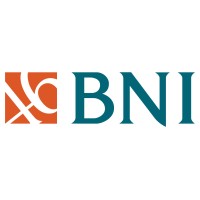Company Cyber Security Posture
NANA
NA Company Details
NA
NA
NA
NA
NA
NA
Scan still pending
NA
NA
Between 200 and 800
This score is AI-generated and less favored by cyber insurers, who prefer the TPRM score.
 NA Global Score
NA Global Score.png)

Company Scoring based on AI Models
| Model Name | Date | Description | Current Score Difference | Score |
|---|---|---|---|---|
| AVERAGE-Industry | 03-12-2025 | This score represents the average cybersecurity rating of companies already scanned within the same industry. It provides a benchmark to compare an individual company's security posture against its industry peers. | N/A | Between 200 and 800 |
Company Cyber Security News & History
| Entity | Type | Severity | Impact | Seen | Url ID | Details | View |
|---|
Company Subsidiaries

NA
Access Data Using Our API

Get company history
.png)
NA Cyber Security News
National Bank of Egypt Enhances Enterprise Security with
BIO-key revolutionizes authentication and cybersecurity with biometric-centric, multi-factor identity and access management (IAM) solutions, securing access for ...
BIO-key Secures Major Win: Egypt's Largest Bank Deploys PortalGuard for 30,000 Employees
BIO-key International (NASDAQ: BKYI) announced that the National Bank of Egypt (NBE), Egypt's largest financial institution, is implementing ...
How National Bank of Egypt handles security as online banking thrives
Abeer Khedr, head of cybersecurity at National Bank of Egypt, outlines major threats to banking as the sector undergoes digital ...
Mastercard extends its partnership with the National Bank of Egypt to bring next level digitization into the Egyptian economy
Mastercard extends its partnership with the National Bank of Egypt to bring next level digitization into the Egyptian economy · The partnership ...
CIO Leadership Live with Abeer Khedr, Head of Cybersecurity at National Bank of Egypt
None
NBE: Africa's first bank to earn ISO 27001:2022 information security certification
The National Bank of Egypt (NBE), one of the leading banks in Egypt, has earned the ISO 27001:2022 information security certification from the British ...
Saudi approves licence for National Bank of Egypt branch, SPA reports
Saudi Arabia's cabinet approved on Tuesday the licence for the National Bank of Egypt to open a branch in the kingdom, Saudi state news ...
Mastercard and National Bank of Egypt collaborate on AI-powered digital employees for enhanced digital banking experience
Mastercard powers economies and empowers people in 200+ countries and territories worldwide. Together with our customers, we're building a ...
Egypt state banks setting up $85 million fintech innovation fund
Egypt's three biggest state-owned banks are setting up an $85 million financial technology fund that aims to accelerate innovation in the ...

NA Similar Companies

PT. BANK NEGARA INDONESIA (Persero) Tbk.
Since its establishment in 1946, BNI has been part of the dynamic of national development in Indonesia. Now BNI has grown and developed into a solid national bank with a sustainable financial performance. ‘Serving the Country, Pride of the Nation”, BNI continues to increase its contribution for the

Emirates NBD
About Emirates NBD Emirates NBD (DFM: Emirates NBD) is a leading banking group in the MENAT (Middle East, North Africa and Türkiye) region with a presence in 13 countries, serving over 20 million customers. As at 30th September 2023, total assets were AED 836 billion, (equivalent to approx. USD 2

Commerzbank AG
Commerzbank is the leading bank for the German Mittelstand and a strong partner for around 25,500 corporate client groups. In addition, it supports private and small-business customers in Germany with more than €400 billion assets under management. The Bank’s two Business Segments – Private and Smal

Bank Pekao S.A.
Bank Pekao S.A. powstał w 1929 roku. Obecnie jesteśmy jedną z największych instytucji finansowych w regionie Europy Środkowo-Wschodniej i drugim, pod względem wielkości bankiem w Polsce z ok. 230 mld zł aktywów. Dzięki znaczącej sieci oddziałów obsługujemy ponad 5,7 mln klientów. Jako wiodący bank k

Axis Bank
Axis Bank is the third largest private sector bank in India. The Bank offers the entire spectrum of financial services to customer segments covering Large and Mid-Corporates, MSME, Agriculture and Retail Businesses. The Bank has a large footprint of 5000 domestic branches (including extension count

Sumitomo Mitsui Trust Bank
Sumitomo Mitsui Trust Bank, Limited (SuMi TRUST) was established through the merger of The Sumitomo Trust and Banking Co., Ltd. with Chuo Mitsui Trust and Banking, Ltd. and Chuo Mitsui Asset Trust and Banking Company, Ltd. on April 1, 2012. SuMi TRUST is Japan's largest trust bank, with AUM of more

Frequently Asked Questions
Explore insights on cybersecurity incidents, risk posture, and Rankiteo's assessments.
NA CyberSecurity History Information
How many cyber incidents has NA faced?
Total Incidents: According to Rankiteo, NA has faced 0 incidents in the past.
What types of cybersecurity incidents have occurred at NA?
Incident Types: The types of cybersecurity incidents that have occurred include .
Additional Questions
What Do We Measure?
















Every week, Rankiteo analyzes billions of signals to give organizations a sharper, faster view of emerging risks. With deeper, more actionable intelligence at their fingertips, security teams can outpace threat actors, respond instantly to Zero-Day attacks, and dramatically shrink their risk exposure window.
These are some of the factors we use to calculate the overall score:
Identify exposed access points, detect misconfigured SSL certificates, and uncover vulnerabilities across the network infrastructure.
Gain visibility into the software components used within an organization to detect vulnerabilities, manage risk, and ensure supply chain security.
Monitor and manage all IT assets and their configurations to ensure accurate, real-time visibility across the company's technology environment.
Leverage real-time insights on active threats, malware campaigns, and emerging vulnerabilities to proactively defend against evolving cyberattacks.




